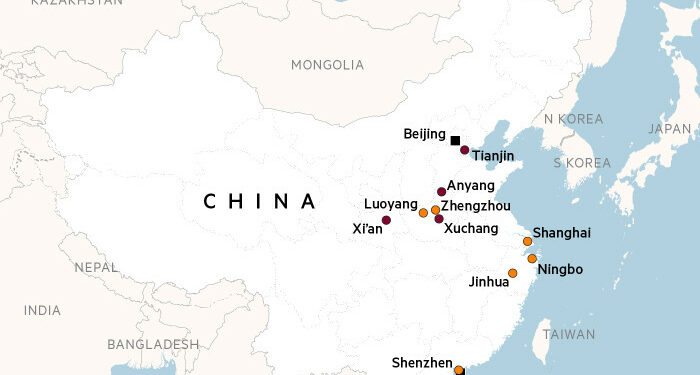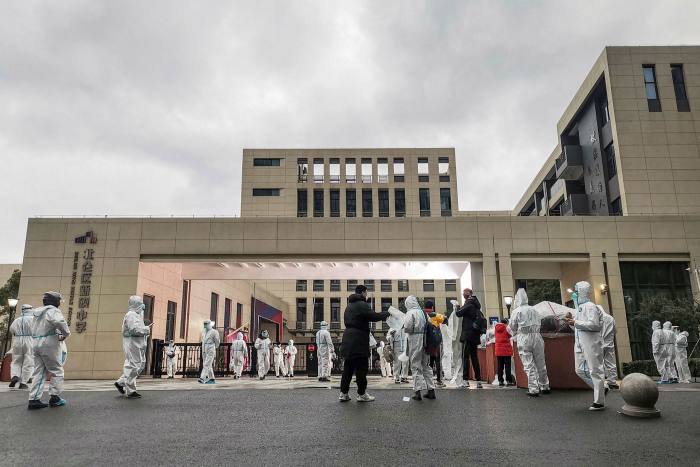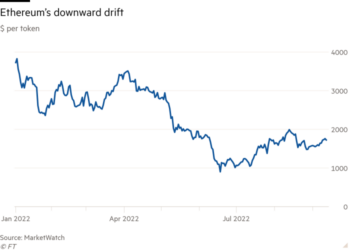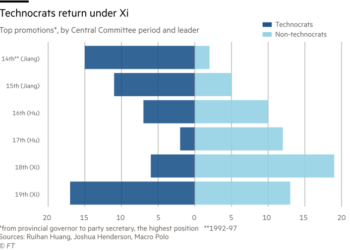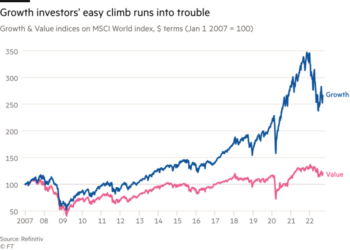China’s battle to contain the Omicron variant risks choking already stretched global supply chains, manufacturing managers and analysts have warned, threatening production of goods ranging from smartphones to furniture.
Beijing is determined to prevent any large-scale transmission of Covid-19, especially as it prepares to host the Winter Olympics next month, and has imposed restrictions to maintain its zero-Covid strategy.
A lockdown in the central city of Xi’an is set to enter its third week, forcing about 13m people to remainin their homes. Restrictions, such as mandatory testing, have been imposed in Tianjin, a port city of 14m about 100km from Beijing, several cities in Henan province, home to the world’s largest iPhone plant run by Taiwan’s Foxconn, as well as parts of Zhongshan and Zhuhai, manufacturing hubs close to Hong Kong.
The measures are a test for multinational companies and whether they have become better equipped to deal with disruption to their manufacturing capacity than during the first wave of the pandemic.
“With Covid, the Lunar New Year holiday and the Olympics all coming together, we could be looking at a perfect storm,” said Ambrose Conroy, chief executive of Seraph, a US-based supply chain consultancy. “Companies are a bit better prepared for short-term lockdowns now but a broader shutdown over a few weeks would wreak havoc.”
An executive at a Taiwanese manufacturer in Shenzhen said a lockdown in the southern Chinese manufacturing hub would be “worse than 2020”.
After the virus spread from Wuhan across China during the Lunar New Year holiday two years ago, the government blocked transport in large swaths of the country. The restrictions prevented hundreds of millions of migrant workers who had travelled over the holiday period from returning to their jobs. Factories were ordered to shut for several weeks.
“This time I am more worried because supply chains around the world are already very tense: there are already long delays in transportation and the component shortage problem is still there,” said Didier Chenneveau, an expert partner at McKinsey, the consultancy.
The latest restrictions have already given multinationals a taste of what is at stake. Carmakers Volkswagen and Toyota both shut their Tianjin plants last week. In Xi’an, chipmaker Samsung has had trouble getting staff to work due to the lockdown.
Toyota, which suffered a huge supply chain disruption in south-east Asia last year, said the shutdown of its Tianjin joint venture plant was “unlikely to bring global impact on our supply as localisation has progressed considerably”.
But infections may spread further. Ningbo, home to the world’s third-largest container port, has reported infections and banned lorries from entering, exacerbating congestion of ships.
Some managers believe Beijing’s focus on preventing any risk to the Winter Olympics will protect locations close to the capital from the risk of a full-blown Omicron crisis.
“Of course you are unlucky if you are hit by a lockdown,” said the Taiwanese executive. “But the authorities’ attention on places like Tianjin also means that they will do everything to help you manage.”
At Samsung Electro-Mechanics, a component manufacturer that has a factory in Tianjin, the local government has told workers not to leave the city for the new year holiday to avoid infection risks.
“Those are preventive measures that make sense. Down here, we are less prepared,” said the Taiwanese executive, whose company is under pressure to let workers return home for the holiday because they have had to miss out on the annual trip twice already.
Analysts say that if infections spread, manufacturers will be as badly hit as they were two years ago with few companies moving large parts of their supply chain outside of China.
“Did anybody really reduce their supply chain risk? Have they moved their Asia-based production back onshore or near shore at scale? The answer is no because these things take a lot of time,” Chenneveau said.
A McKinsey study found that only 60 per cent of those surveyed have increased critical inventory and only half have increased dual sourcing.
Mitsubishi Electric is building a platform for sharing database information with suppliers on parts that are in short supply but it will only be completed in 2025.
The virus-induced shutdowns in economies elsewhere have actually increased many industries’ dependency on China at least in the short term.
A typical example is in the production of multilayer ceramic capacitors (MLCC), components for storing energy used in any product that has electrical circuits. Close to half of the world’s MLCC capacity is in China, according to Trendforce, the research company.
“MLCC has been in shortage anyway, and often each plant specialises in making one unique product, so when one factory is down, no other can step in as back-up,” said Forrest Chen, an MLCC analyst at Trendforce.
Japanese MLCC maker Murata is building a new plant in Thailand to reduce overconcentration in China. But the company has also started manufacturing some products at its factory in the eastern Chinese city of Wuxi, after the pandemic forced closure of a Japanese plant which used to make them exclusively.
“Everyone is trying to build second suppliers in China. That includes finding alternative sources for buying components as well as identifying locations among your own factories that could act as back up,” said a consultant who works with electronics companies.
But none of these arrangements has come far enough. “It takes three to five years to get the geographic diversification in place,” Chen said.
Additional reporting by Xueqiao Wang in Shanghai


